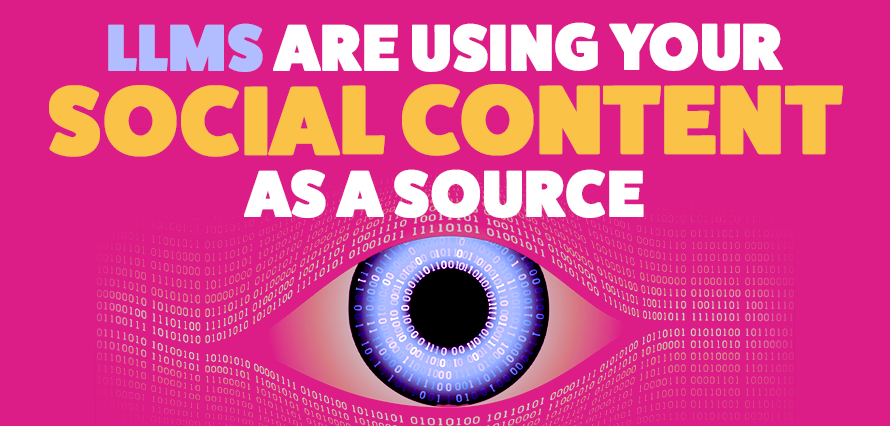June 19, 2025

The headline might be frightening – but it shouldn’t be; it should be validating and a reflection of impactful content. The ways of search are changing, both on the open web and on social. Clever tactics on social allows for LLM data scraping that can further personal brands and businesses.
Major tech players have reportedly indexed all accessible text data from the web – and that includes social posts. This for training their models, sure – but sourcing has become more and more prominent when it comes to answers questions and queries from users.
For B2B in particular, this is huge.
When we think of B2B, we think of LinkedIn – and while there is clear data that shows our B2B audience is spread far and wide on social, it’s the strongest platform for lengthy B2B insights and thought-leadership. It then makes sense that AI tools such as ChatGPT, Claude and Perplexity are gleaning insights from highly engaged posts to add validity to its sourcing when providing answers.
OK, so what does this actually mean for social?
Well we’ve been uncovering data that says online search is pivoting more and more away from the likes of Google and people are leaning on AI and social to find the answers.
Google’s search results are starting to grate on a few; its AI responses are helpful but not entirely trustworthy – and with SEO and paid search a very transparent operation, we can’t trust top results on search anymore. It’s who pays wins; which isn’t built on reputation.
But what this means for social is that your older content is likely to be re-ignited months down the line. Indexed content for LLMs is making content evergreen – so while organic performance generally on LinkedIn isn’t a way for quick engagement, you could be rewarded months down the line…
We now know B2B buyers use AI tools A LOT during their research – that’s according to SalesForce.
Business or personal?
It’s not clear yet how far LinkedIn’s presence on LLM models will go and whether company pages could appear at some point – or whether the AI tools would rather lean on individual pages. The latter makes more sense as these typically get more engagement by way of comments and reshares…which is the primary reason for LLMs scraping data from social at all. As AI tries to get more and more intelligent, it’s going to source material that has credit and validity to it.
Regardless, the picture here is clear – get your stakeholders to be more active on LinkedIn!
Their insights are so important, and it could be that a post is seen further down the line via LLMs in the B2B buyer journey that gives your business the edge.
Looking for ideas for persuasion?
- Firstly, show them this blog!
- Then, do some searches related to your industry on any AI tool – and when asking a specific B2B question, ask them to source LinkedIn content to validate
- That should get them thinking…
- If they’re looking for ideas on post crafting; keywords are essential, think about the customer journey from problem, idea, solution.
This is a good starting point!